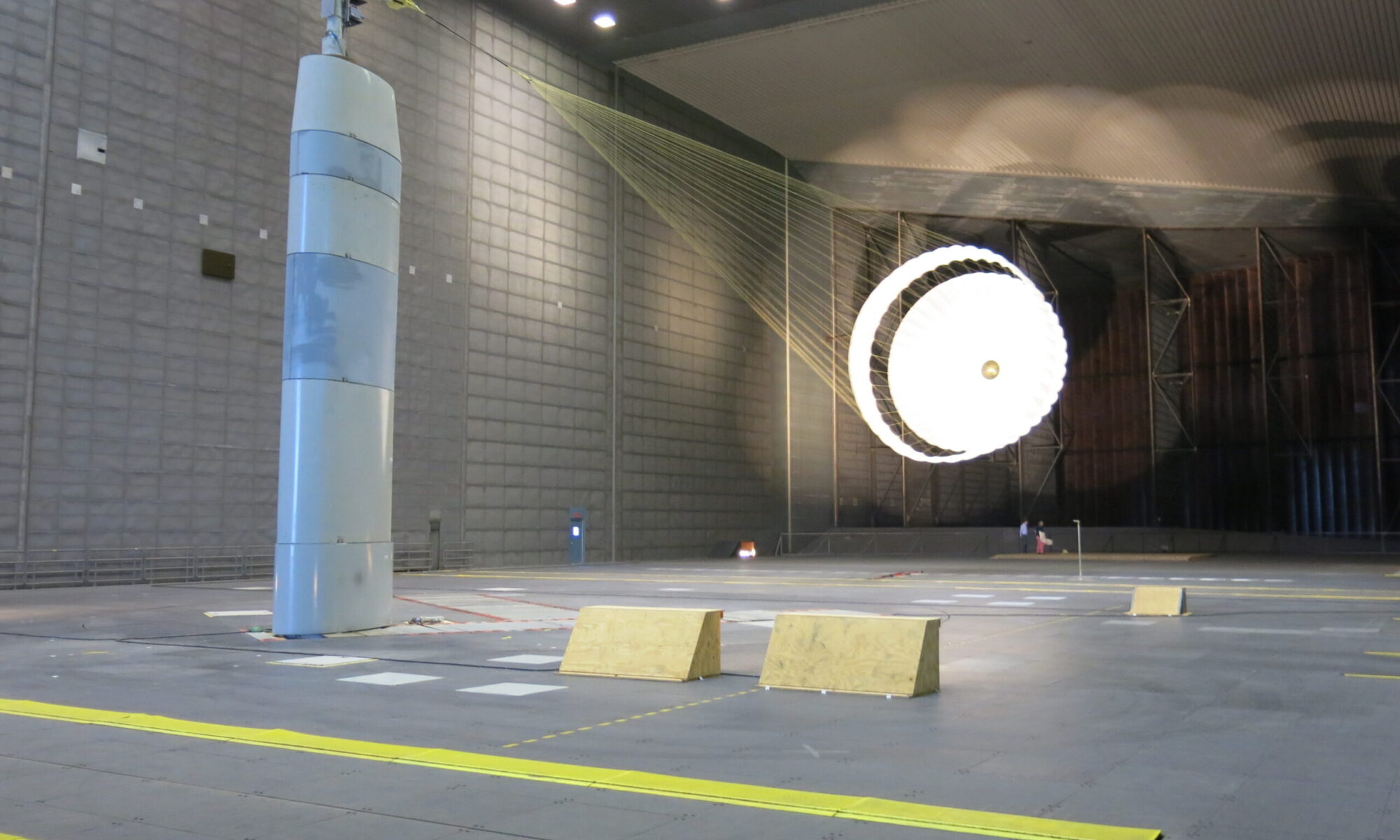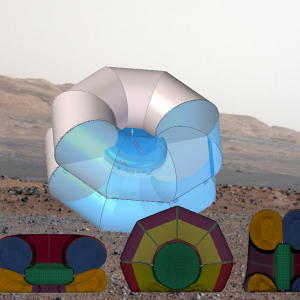Tune into the updates from ESA’s space operations centre as the ExoMars Trace Gas Orbiter approaches and enters orbit around the Red Planet, and the Schiaparelli module lands on its surface.
Testing Schiaparelli’s Parachute
This is a test version of the parachute that will slow the Schiaparelli entry, descent and landing module as it plummets through the Martian atmosphere on 19 October 2016.
When the module is about 11 km from the surface, descending at about 1700 km/h, the parachute will be deployed by a mortar. The parachute will slow the module to about 200 km/h by 1.2 km above the surface, at which stage it will be jettisoned.
The parachute is a ‘disc-gap-band’ type, as used for the ESA Huygens probe descent to Titan and for all NASA planetary entries so far. The full-scale qualification model, pictured here, was used to test the pyrotechnic mortar deployment and the strength of the parachute in the world’s largest wind tunnel, operated by the US Air Force at the * National Full-Scale Aerodynamic Complex in the Ames Research Center, California.
Earth Return Capsule Campaign
In June 2015, Vorticity will be flight testing six prototype Earth Return Capsules at the Swedish Space Centre in Kiruna, Sweden on behalf of the European Space Agency.
The capsules are candidates for returning scientific samples from asteroids, comets or Mars in future ESA missions. These missions require capsules which are stable throughout entry and descent without the need for a parachute.
Three candidate designs have been chosen: two are similar to the Japanese Haybusa asteroid sample return capsule and the third is based on the ESA Huygens probe.
The test will involve three stratospheric balloon flights. On each flight, two vehicles will be dropped from an altitude of 35 km above northern Sweden. A full-scale vehicle will replicate the final descent from Mach 0.8 of the flight design while a sub-scale version of the same design will test the shape at up to Mach 1.5 by first accelerating in an aerodynamic fairing before starting measurements.
The data will allow derivation of the aerodynamic properties of all three designs between Mach 1.5 and landing.
Airbags for Small Landers Design: Study Success
Vorticity and partners TNO/CGG Technologies, Airborne Systems USAand the University of Leeds have successfully completed the Airbags for Small Landers: Design project for the European Space Agency. The final meeting and presentation of the project was held in May 2013 at ESTECin the Netherlands.
In the course of the project, three separate airbag landing systems for two different Mars landers were analysed and designed, along with inflation systems based on the new Cool Gas Generator technology developed by TNO/CGG Technologies. In support of the designs, a complete costed development plan was produced to take the designs through to delivery of flight hardware. Airbag envelope material tests were conducted at the University of Leeds, along with development of some novel test methods to study biaxial loading and puncture damage tolerance.
A paper summarizing the project, AIAA 2013-1279, was presented at the 22nd AIAA Aerodynamic Decelerator Systems Technology Conference in March 2013.
Vorticity and the British Antarctic Survey
Vorticity Ltd provided the specialist parachute consulting advice to the British Antarctic Survey for their Javelin drop on the Pine Island Glacier.
The project required a parachute which would stabilise the payload and decelerate it to a precise terminal velocity to ensure it embedded correctly in the glacier.
Dr David Jones technical development leader on Project Javelin for the British Antarctic Survey, told us “Your parachutes [consulting advice], and the rest of the javelin (ADIB) project design were a huge success – we now have 30 active javelins scattered across inaccessible regions of the Antarctic.”
For further information about our terrestrial parachute consulting capability please contact Dr Steve Lingard or John Underwood.





